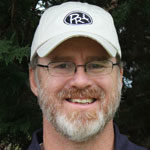
Location, wind direction, ease of access and cover are keys for selecting the perfect deer-stand tree.
As hunters prepare for the peak of deer season or the changes in deer behavior, many are looking at hanging or moving tree stands into just the right locations. Part of the puzzle we try and solve with mature bucks is getting into their core or travel areas and putting ourselves in just the right tree, especially when hunting with archery equipment, a muzzleloader or a shotgun.
How often are we sitting in our stand, only to see the buck we are targeting wander past, just out of range. If we had picked a better tree, we would be in the right place. But he gets to walk while we watch, and our efforts are in vain.
Selecting the right tree can be one of the most satisfying parts of killing mature bucks. It all begins with narrowing down the area. Scouting will let us know where we suspect the big buck to travel.
Chad Simpson of Hendersonville, N.C., has developed a method that has allowed him to be successful at finding the right tree. Once he has identified an area through scouting, and when he’s used topographical maps to find funnels or pinch points, he uses the topography to narrow the area down to a 50-yard radius.
“I then look at the dominate winds for the area for the time of year I plan to hunt this stand,” he said. “If the dominate wind is say, northeast, then I will find a good tree that will allow for a good sit with a northeast wind. After I identify a group of trees that fit that criteria, I look for a tree that will offer good cover and I can get into and out of quietly and quickly.”
Those are his three criteria: dominant wind direction, access to the stand and good cover.
“Too many hunters look for the straightest tree or a certain species, like pine or popular and just climb that tree,” said Simpson, who believes the focus needs to be on the tree’s location, not its species or shape.
The next thing Simpson does is clean out an access path to the stand by cutting all limbs, removing ground debris and marking the route well. Sometimes, he even deploys a backpack blower to remove all ground clutter for the entire length of the path to the stand.
“I have seen too many times that I sneak into the stand in the dark, not making a sound walking on bare ground in the woods, climb into my stand and secure my harness,” he said. “And as soon as I can see, there are deer everywhere. If I had not cleaned the path, I would have spooked these deer getting into my stand.”
Once he picks out a particular tree, Simpson hangs his stand and leaves it alone until it’s time to hunt, and only then on the perfect wind.
David Catoe of Lugoff, S.C., spends time afield in the offseason looking for just the right tree from which to ambush wary bucks. Using knowledge of an area and game cameras gives him a good idea of where bucks are traveling and allows him to pattern their movements. Using what he’s learned — and using a portable climbing stand, Catoe is able to get into the bucks area without his knowing it.
“I will pay attention to the wind, but I really like to make sure the sun is at my back when possible,” said Catoe, who will almost always pick a tree that puts him in position to have the sun over one of his shoulders, depending on the time of day he plans to hunt.
“I like to find a tree that will put the sun on the deer. The shadows of the tree will help hide my presence and keep the deer from noticing me,” said Catoe, who changes trees throughout the season, preferring more open areas in the early season and hunting closer to the thick stuff as the season lingers on and winter approaches.
“Early season deer are not as wary, and I want to see more, so I hunt more cutovers, food plots and open woods,” he said.
Catoe believes a portable climber is much better than a chain-on or ladder stand that leaves a presence in an area.
“I’ve seen too many times where a buck will completely change his pattern when someone goes in and hangs a stand,” he said. “I started using climbing stands, and it is still my preferred method of hunting.”
A portable stand allows him to change his approach as the wind or weather changes.




Be the first to comment